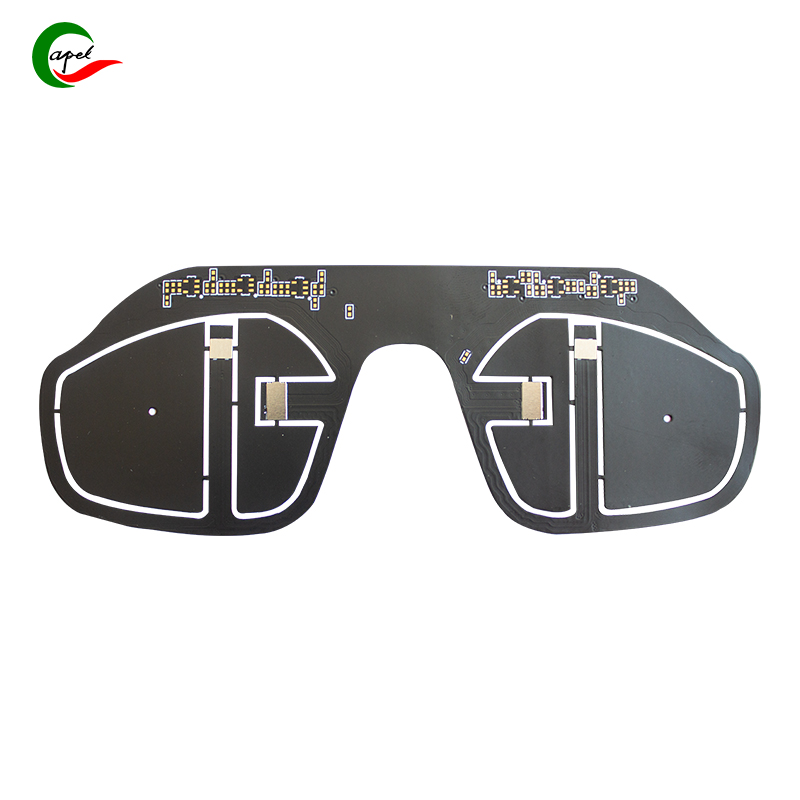Flexible PCBs have become a cornerstone of modern electronics, and for good reason. These bendable circuits offer a host of benefits that rigid PCBs simply can’t match, making them indispensable in everything from smartwatches to spacecraft. Let’s dive into their key advantages.
Unlike rigid PCBs, which are locked into flat, fixed shapes, flexible PCBs thrive in tight, curved, or moving spaces. They can bend, twist, fold, or wrap around components, fitting into areas that would be impossible for rigid boards. This opens up a world of design possibilities: think of the curved screen on your smartphone, the slim profile of wireless earbuds, or the compact internals of a fitness tracker. Engineers no longer have to work around bulky circuit boards—instead, they can shape the PCB to fit the device, resulting in sleeker, more functional products. For foldable phones, this flexibility is game-changing: the PCB bends with the screen, keeping circuits connected even after thousands of folds.
Flexible PCBs are dramatically lighter and thinner than their rigid counterparts. Made with thin layers of polyimide (a lightweight, flexible material) and copper, they add minimal bulk to devices. This is a huge win for applications where weight matters—like aerospace, where every gram affects fuel efficiency, or wearables, where comfort depends on keeping devices light.
They also save critical space. Rigid PCBs often require extra wiring, connectors, or multiple boards to fit into complex designs, but a single flexible PCB can replace all that. In electric vehicles, for example, flexible PCBs tuck neatly into battery packs, managing hundreds of cells without wasting space. In medical devices like pacemakers, their small size allows them to fit inside the body, delivering life-saving functionality without being intrusive.

Don’t let their flexibility fool you—flexible PCBs are tough. They’re designed to withstand the kinds of stress that would break rigid boards: vibration, temperature swings, and repeated movement.
- Vibration resistance: In cars, industrial machinery, or drones, flexible PCBs hold up to constant shaking, where rigid boards might crack or loosen connections.
- Temperature tolerance: Materials like polyimide can handle extreme heat (up to 300°C) and cold, making them ideal for engine bays, outdoor sensors, or even space equipment.
- Longevity in motion: From robotic arms to printer mechanisms, devices with moving parts rely on flexible PCBs to endure repeated bending without failing. Rigid boards would fatigue and break under the same stress, but flexible PCBs keep working reliably.
Flexible PCBs simplify manufacturing, which translates to lower costs. A single flexible PCB can replace multiple rigid boards and the wiring harnesses that connect them, reducing the number of parts needed. Fewer parts mean fewer assembly steps, faster production, and lower labor costs—especially in mass-produced devices like smartphones or tablets.
They also reduce the risk of errors. With fewer connectors and wires, there are fewer points where a connection could fail. This boosts reliability and cuts down on costly repairs or recalls, saving both manufacturers and consumers money in the long run.
In high-frequency devices—like 5G modems, radar systems, or IoT sensors—signal quality is critical. Flexible PCBs minimize signal loss by reducing the need for long wires or multiple connectors, which can disrupt or weaken signals. Their streamlined design keeps traces short and direct, ensuring faster, more reliable data transmission. This is why they’re a top choice for advanced tech where split-second communication matters.
From your pocket to outer space, flexible PCBs deliver advantages that make modern innovation possible. Their ability to combine flexibility, durability, and efficiency is why they’re not just a trend—they’re the future of electronics design.
Founded in 2009, our company has deep roots in the production of various circuit boards. We are dedicated to laying a solid electronic foundation and providing key support for the development of diverse industries.
Whether you are engaged in electronic manufacturing, smart device R&D, or any other field with circuit board needs, feel free to reach out to us via email at sales06@kbefpc.com. We look forward to addressing your inquiries, customizing solutions, and sincerely invite partners from all sectors to consult and collaborate, exploring new possibilities in the industry together.